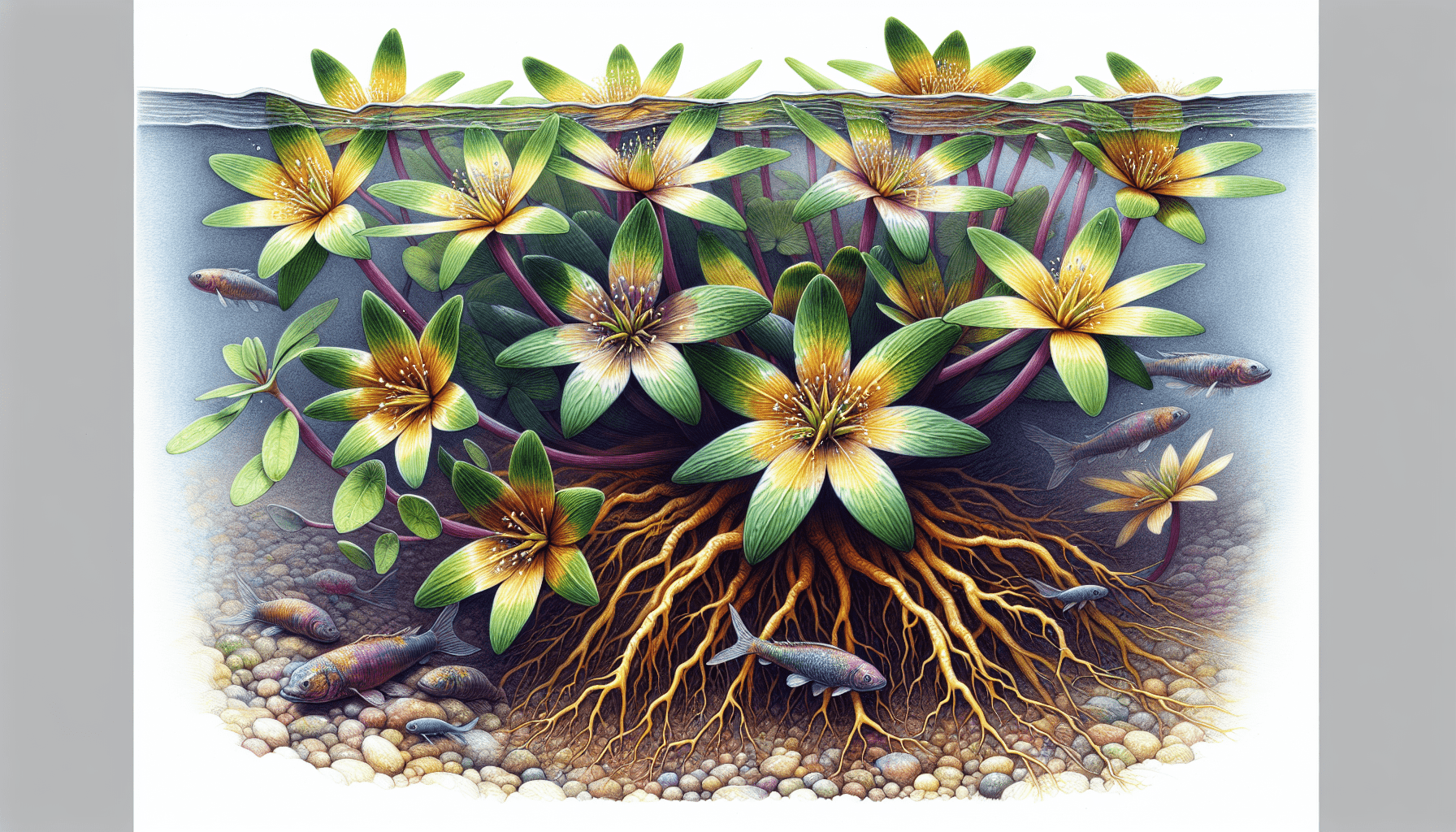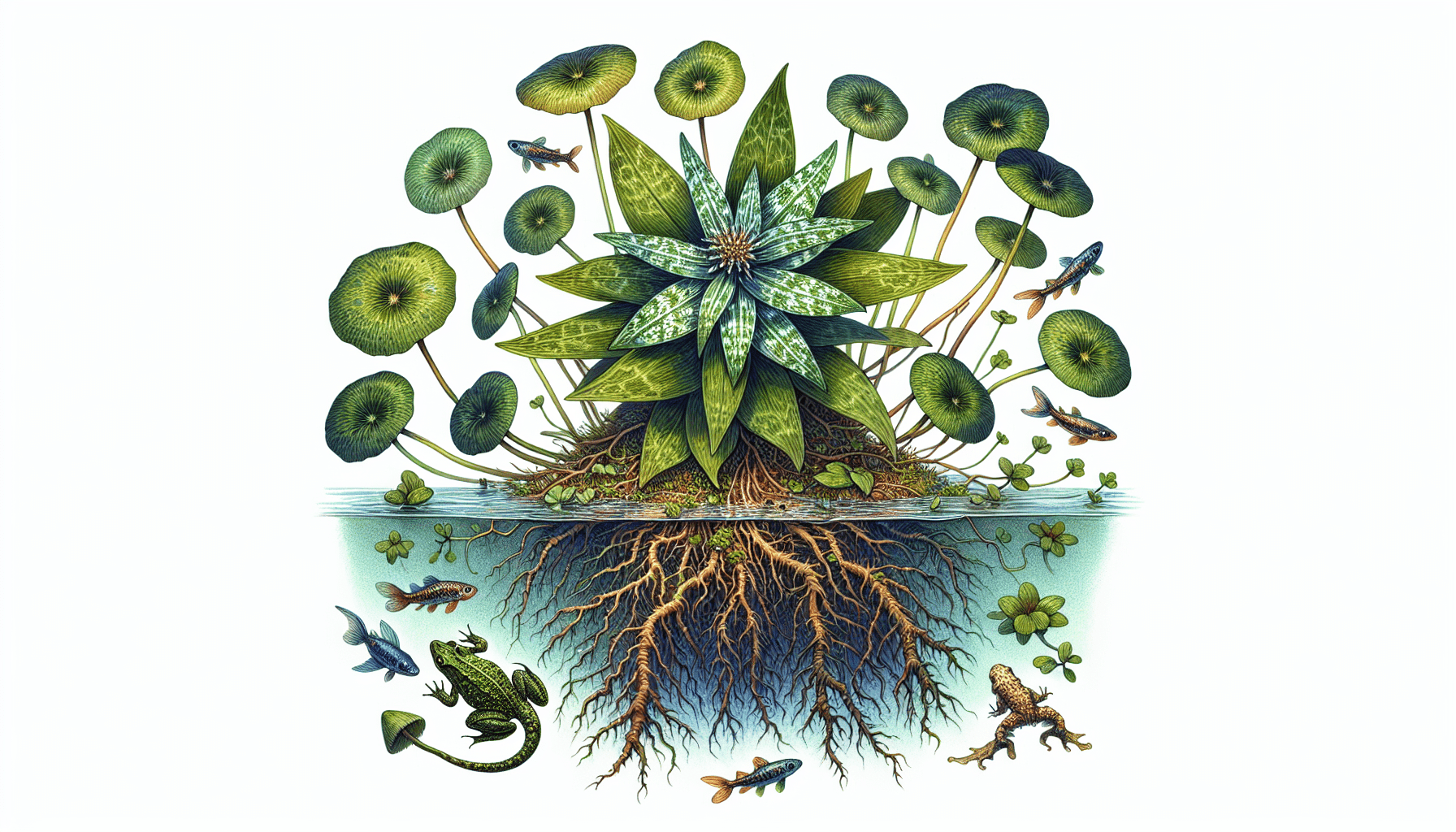In this academic exploration, you are invited to become acquainted with a unique specimen amongst aquatic flora – the Star Duck Plant. This plant, intriguing in both its moniker and its biological attributes, promises a fascinatingly engaging journey into the realm of water-based botany. As you traverse through the narrative, you shall find yourself enlightened about the botany, specific characteristics, ecological significance, and floricultural uses of the Star Duck Plant. Embrace this unique opportunity to augment your understanding of a less recognized, yet intriguing component of our water ecosystems.

Overview of Star Duck Plant
Scientific name and classification
The Star Duck is scientifically named Nymphoides aquatica. It belongs to the family Menyanthaceae, which comprises of around 60 species of annual and perennial flowering plants. The genus Nymphoides, is derived from the word “Nymph”, indicating the plant’s aquatic nature.
Physical features and behavior
The Star Duck plant is an attractive aquatic species known for its charismatic star-shaped flowers, every bit reminiscent of its name. It has delicate white or light pink flowers that consist of five fringed petals, which rise above the water surface, along with a stunning array of circular, ribbed leaves that float on water. The Star Duck plant is a perennial species, forming dense mats of foliage that provide cover for aquatic organisms.
Habitat and global distribution
The Star Duck plant is a freshwater species indigenous to the southeastern United States, but it is now grown worldwide under different climate zones, thanks to its adaptability to a variety of environmental conditions. It is found in streams, ponds, lakes, and ditches, and it thrives best in slow-moving or standing waters.
Growth Habits of Star Duck Plant
Preferred environmental conditions
This species grows best in fresh water with a pH range between 6.0 to 7.2, and it prefers light conditions varying between full sunlight to minimal shade. Star Duck plant prefers a room temperature of about 20 degrees Celsius but can tolerate temperatures ranging between 18 to 28 degrees Celsius.
Growth rate under optimal conditions
In optimal conditions, the Star Duck plant has a vigorous growth rate. The floating leaves and emergent flowers rapidly cover the water’s surface, and it can double its size in just a few weeks.
Lifespan and longevity in the wild
In the wild, Star Duck plant exhibits significant longevity- it can continue to grow for many years, given the right environmental conditions. Like many perennials, individual leaves and flowers may die back, but the rhizome ensuring the plant’s survival persists.
Strategies for reproduction and spreading
Star Duck plant reproduces via seeds and vegetative propagation, either through rhizomes or accidental breakage and transport of plant fragments. This dual reproduction strategy ensures that the plant can regenerate even if one method fails.
Ecological Role of Star Duck Plant
Contributions to the aquatic ecosystem
The Star Duck plant offers numerous ecological benefits. It provides shelter and habitat for various aquatic species, including small fish, amphibians, and invertebrates. It also contributes to water quality by absorbing excess nutrients, thus reducing the chance of algal blooms and maintaining a more balanced ecosystem.
Common predators and natural threats
Waterfowl, especially ducks, are known to feed on the Star Duck plant, which gives it its common name. Also, a number of aquatic insects and snails might eat the leaves and flowers. Changing water conditions and pollution are significant threats to the survival of this plant.
Role in human economies, if applicable
Star Duck plant is increasingly being incorporated into water gardens and aquascapes due to its aesthetic appeal and ability to improve water quality. As a result, it plays a part in the commerce and trade of ornamental plants.

How to Identify Star Duck Plant
Key identifiers and markers
The star-shaped flowers and circular, floating leaves are distinctive markers of the Star Duck Plant. The leaves are typically green or slightly yellow, and the fringed, floating flowers are usually light pink or white.
Commonly confused species and how to distinguish between them
The Star Duck plant can be confused with other floating-leaf plants, such as the water lily. The key distinction lies in the flower shape and leaf surface. Star Duck plant’s flowers are star-shaped with distinct fringes, unlike the smooth petals of the water lily. Star Duck leaves are also generally smaller and have unmistakable ribbed patterns on the leaf surface.
Propagating and Cultivating Star Duck Plant in a Home Aquascape
Requirements for light, temperature, and water quality
Star Duck plant requires moderate to bright direct light exposure for optimal growth. It can tolerate a wide range of water temperatures, ideally between 18 to 28 degrees Celsius. The suitable pH range is from slightly acidic to slightly alkaline (6.0 -7.2).
Steps to propagate from seed or cuttings
Propagation of Star Duck plants from seeds requires collection of seeds from mature plants, planting in suitable soil, and maintaining ideal water and light conditions for germination. On the other hand, vegetative propagation involves taking a cutting of the rhizome or stem and planting it in suitable substrate under optimal conditions.
Regular care and maintenance for optimal growth
Star Duck plant requires periodic pruning to prevent it from covering the total water surface and inhibiting light penetration. Also, monitor the water quality, ensuring the pH and temperature are within acceptable ranges.
Potential Challenges in Growing Star Duck Plant
Common pests and diseases
Like many aquatic plants, Star Duck plant is susceptible to pests such as aphids and spider mites, as well as diseases like root rot caused by flooding or poor water quality.
Strategies for prevention and treatment
Ensuring optimal water quality and regularly checking the plant for signs of pests or disease can help in prevention. Treatment involves removing infected parts and using organic pesticides or fungicides as required.
Potential impacts of sub-optimal water conditions
Sub-optimal water conditions can lead to poor plant health, such as discoloration of leaves, slow growth, or even death of the plant. High acidity or alkalinity, temperature extremes, and low light conditions are particularly harmful.
Benefits of Star Duck Plant in Aquatic Landscaping
Aesthetic appeal
With its quaint floating leaves and distinct star-shaped flowers, the Star Duck plant adds a unique charm to aquatic landscapes.
Creating habitat for aquatic wildlife
Not just visually appealing, the plant creates habitats for aquatic wildlife, including fish, snails, and amphibians.
Improvements to water quality
By absorbing excess nutrients from the water, Star Duck plant helps in maintaining water quality, contributing to a healthy and balanced ecosystem.
Conservation Status and Threats to Star Duck Plant Populations
Current conservation status
The Star Duck plant is not currently listed as an endangered species. However, drastic changes in its natural habitat could pose risks to its survival.
Threats from habitat loss and pollution
Habitat loss due to urbanization, pollution of water bodies, and invasive species are the primary threats to Star Duck plant populations in the wild.
Initiatives to protect and conserve the Star Duck Plant
Though not currently under threat, private and governmental organizations are pushing initiatives to protect aquatic habitats, indirectly conserving species like the Star Duck plant.
Legality and Regulation around Star Duck Plant
Laws around collecting and transporting Star Duck Plant
There may be regional and national laws governing the collection and transportation of native aquatic plant species, including the Star Duck plant. It is advisable to check with local authorities or consult recent legislation to ensure compliance.
Potential penalties and fines for non-compliance
Failure to adhere to such laws can result in penalties or fines, and in severe cases, criminal charges.
Educational Resources on Star Duck Plant
Recommended books and publications
Books on aquatic plants, freshwater ecosystems, and horticulture often provide valuable information on the Star Duck plant.
Online databases and websites
Several online databases and websites provide information about the natural history and care of aquatic plants, including the Star Duck plant.
Aquarium societies and clubs for hobbyists
Joining aquarium societies or clubs can provide a wealth of information from experienced hobbyists and professionals who have hands-on experience with cultivating and caring for Star Duck plant.
